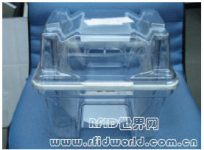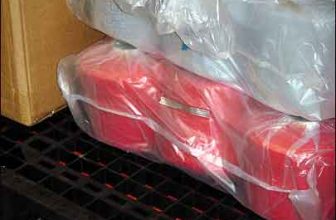
Nanmao Technology introduces RFID technology to wafer test application (part 1)
[ad_1]
The semiconductor industry has always been listed by the government as one of Taiwan’s industrial development priorities. However, in recent years, as the mainland has actively invested in the semiconductor foundry industry, the development situation on the other side has had a considerable impact on the development of my country’s semiconductor industry, and it is also facing strong competitive pressure. How to provide customers with real-time and most effective information on wafer packaging and testing foundry services, so that customers can make the best decisions in the shortest time, and become the best weapon to win business opportunities and occupy the market. And in the case of customer profit and customer performance, the relationship with customers is no longer a pure OEM service relationship, but will be transformed into a strategic partner to create a win-win future with customers. Therefore, Nanmao Technology introduced RFID technology into the application, and combined the development and construction of the “Wafer Test Real-time Common Information System Application Development Plan” in conjunction with the Information Technology Council, Taiwan Oracle and RFID hardware manufacturers. At the same time, this is also the first RFID application in the world. Innovative application plan in the wafer packaging and testing industry.
Plan scope
This plan ranges from wafer manufacturing and wafer testing to real-time monitoring of wafer packaging. The common information system developed connects the endpoints of the semiconductor industry chain from IC design, foundry, wafer testing to wafer packaging. , To achieve real-time information between upstream, middle and downstream customers, and solve the problems of instability of wafer supply in the supply chain, changing customer needs, urgent order insertion, and untimely information.

Figure 1. Eight-inch wafer cassette

Figure 8. Wafer cassette and RFID tag
The RFID technology will be imported and applied to the automatic receipt and delivery management of import and export terminals, test machines, nitrogen tanks and trolleys, to achieve automated packaging and testing processes and inventory management, to provide real-time information on wafer testing, to respond to customer needs in real time and reduce supply Operating costs between chains. In the entire wafer testing process, there are two items that Nanmao hopes to be able to track and manage. The first is of course the wafer, but most of the time the wafer is placed in the wafer cassette (Figure 1, 8). The purpose is to protect the wafers. In this plan, we use 8-inch wafers as RFID tracking targets.
The second is the probe card. The main function of the probe card is to act as a communication interface between the test machine and the wafer to be tested. When the test machine sends a test signal, it is transmitted to the wafer to be tested via the probe card. The signal from the wafer to be tested is transmitted back to the testing machine via the probe card. The probe card is a precision jig specially used in the back-end wafer test, which is a high-priced consumable. Similarly, in addition to being used in the testing machine, the probe card is also placed in the protective box (Figure 2) most of the time.

Figure 2. Probe card and probe box
In the past Nanmao’s operation process, to find wafers and probe cards, it often took a lot of manpower and time and cost, which caused management trouble and burden. Therefore, the location of wafers or probe cards can be clearly and accurately provided by Nanmao to import RFID. The main purpose of technology.
However, since the real tracking object cannot be attached to any RFID tags, we changed to tracking wafer cassettes and probe cassettes. At the same time, because of the difference in the use of tracking targets between the two, we use HF passive technology (ISO 15693) for management and tracking in the wafer cassette part, which will be described in detail below; while the probe cassette uses UHF active technology for management and tracking. Management tracking.
RFID import wafer cassette tracking plan
Before discussing the RFID import wafer cassette tracking plan, we must first understand the process of wafers in the Nanmao test plant, and at the same time, consider the minimum impact on the existing process when RFID is imported (Figure 3).

Figure 3. Nanmao Wafer Related Process
When the wafers are shipped from the upstream foundry to Nanmao, firstly, the warehouse staff will do some box reception (according to the shipment work order sent by the foundry in advance), and then unpack the boxes one by one and inspect the wafers. Whether the number of circles is wrong, whether the wafer is damaged, etc., if there is no problem, put the wafer cassette in a nitrogen cabinet for storage to complete the storage operation.
During the transportation of all wafer cassettes in the field, the wafer cassettes are placed in a trolley as a transportation tool. According to the test scheduling plan, the production line personnel will take out the wafer cassettes from the warehouse for testing, and the testers will input the wafer lot number into the computer to download the test program and test the correctness of the probe card, and wait for the test or test. The finished wafers are also placed in the wafer cassette and placed in the nitrogen cabinet for storage. After the test is completed, the wafers are moved back to the warehouse to be transported to the downstream wafer packaging site to complete the outbound operation.
In the above process, where to import RFID technology:
The first is the warehouse entry, delivery, and junction with the production line. The purpose is to clearly clarify when the wafer enters the warehouse or production line and when it leaves the warehouse or production line.
The second is the nitrogen cabinet. No matter in the warehouse or the production line, the most common place for wafer cassettes is the nitrogen cabinet. Therefore, there are dozens of large and small nitrogen cabinets in these places, and we choose the most common 8-inch in the factory. The wafer cassette nitrogen cabinet is the target of import. This nitrogen cabinet can hold up to 32 8-inch wafer cassettes. Of course, the import purpose is to query the wafer lot number, which can clearly inform the query wafer lot number and wafer cassette placement On which nitrogen cabinet, on which floor, and on which side.
The third is a trolley, because when the wafer cassette is moved in the testing plant, it needs to be placed on the trolley for transportation according to regulations, or when the wafer is waiting and the wafer test is completed, the wafer cassette is placed on the trolley And the trolley is parked in the designated parking area next to the testing machine. The above-mentioned wafers and positions can also be tracked through RFID technology.
The fourth one is the testing machine and the probe card. When the wafer needs to be tested, the tester must first go to the unit that keeps the probe card and take out the probe card. At the same time, manually according to the lot number of the wafer to be tested. Setting or operating the download test program, if the operation is wrong, causing the download program execution error, the waste of time is very considerable. Therefore, it is hoped that RFID technology can be integrated with the test machine, and the wafer lot number is transmitted to the test machine system through RFID technology. The test machine system can download related test programs to the test machine to save the chance of manual operation errors. Time wasted.
[ad_2]



